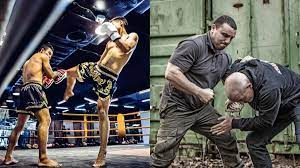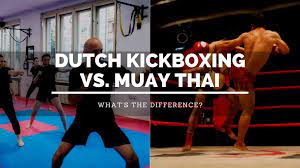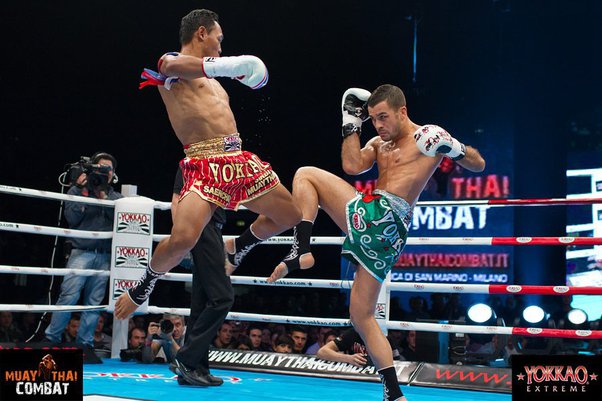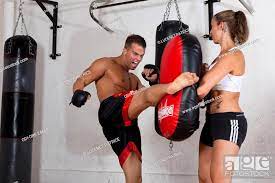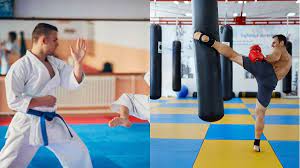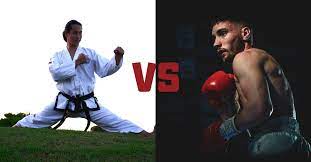Kickboxing vs Krav Maga: Choosing the Right Martial Art for Self-Defense
Introduction
When it comes to self-defense, there are numerous martial arts styles to choose from. Among the popular options, kickboxing and Krav Maga stand out as effective and practical disciplines. Both martial arts provide valuable skills for real-life combat situations, but they differ in their techniques, training methods, and philosophies. In this article, we will explore the key differences between kickboxing and Krav Maga, helping you make an informed decision on which martial art suits your needs.
1. Understanding Kickboxing
1.1 Origins and Philosophy
Kickboxing originated in Japan and gained popularity in the 1960s and 1970s. It combines elements of traditional martial arts, such as karate and Muay Thai, with Western boxing techniques. The philosophy of kickboxing revolves around striking with punches, kicks, knees, and elbows while maintaining proper balance, speed, and accuracy.
1.2 Techniques and Training
Kickboxing emphasizes powerful strikes using various parts of the body. Practitioners learn a wide range of punches, kicks, knee strikes, and clinching techniques. Training sessions involve pad work, bag work, sparring, and conditioning exercises. The focus is on developing strength, agility, and cardiovascular endurance.
1.3 Fitness and Conditioning Benefits
One of the significant advantages of kickboxing is its ability to improve overall fitness levels. The high-intensity workouts burn calories, increase stamina, and enhance muscle tone. Regular kickboxing training can also improve flexibility, coordination, and reflexes.
1.4 Competitions and Sporting Aspect
Kickboxing has a competitive aspect with various formats, including point fighting and full-contact matches. Tournaments and championships provide an opportunity for practitioners to showcase their skills and test their abilities against opponents of similar levels.
2. Unveiling Krav Maga
2.1 Origins and Philosophy
Krav Maga, developed in Israel, was initially designed for military self-defense. Its philosophy revolves around practical and efficient techniques for real-life situations. Krav Maga focuses on neutralizing threats as quickly and effectively as possible, emphasizing instinctive movements and targeting vulnerable areas.
2.2 Techniques and Training
Krav Maga techniques are straightforward and designed for self-defense purposes. Practitioners learn strikes, kicks, joint locks, throws, and defensive maneuvers. Training sessions include simulated real-life scenarios, where practitioners face various threats and learn to react decisively under stress.
2.3 Realistic Self-Defense Focus
Krav Maga’s primary objective is to equip individuals with practical self-defense skills. It teaches techniques for handling common attacks, such as punches, grabs, chokes, and weapon threats. Krav Maga emphasizes preemptive strikes and techniques to incapacitate an opponent quickly.
2.4 Mental Preparedness and Awareness
Apart from physical techniques, Krav Maga also emphasizes mental preparedness and situational awareness. Practitioners learn to assess their surroundings, identify potential threats, and make quick decisions in high-pressure situations. Mental resilience and confidence are essential aspects of Krav Maga training.
3. Kickboxing vs. Krav Maga: A Comparative Analysis
3.1 Techniques and Strikes
While both martial arts involve striking, kickboxing focuses on a wider range of striking techniques, including punches, kicks, knees, and elbows. Krav Maga, on the other hand, emphasizes simple and practical strikes aimed at vulnerable areas like the groin, eyes, or throat.
3.2 Training Methods
Kickboxing training often involves structured classes with a focus on technique refinement, sparring, and competitions. Krav Maga training incorporates realistic scenarios and stress drills, preparing practitioners for unpredictable and potentially dangerous situations.
3.3 Defensive Tactics
Krav Maga places a strong emphasis on defensive tactics and counterattacks against common street attacks. Kickboxing also includes defensive techniques but with a greater focus on evasion and movement to avoid incoming strikes.
3.4 Fitness and Conditioning
Both martial arts offer excellent fitness and conditioning benefits. Kickboxing provides a more structured approach with dedicated fitness drills and conditioning exercises. Krav Maga training, while physically demanding, also emphasizes functional fitness and endurance required in real-life confrontations.
3.5 Applicability in Real-Life Situations
Krav Maga’s training methodology and focus on practical self-defense techniques make it highly applicable in real-life situations. Kickboxing techniques can also be effective, but they are more geared towards sport and competitions rather than real-world encounters.
4. Choosing the Right Martial Art for You
4.1 Self-Defense Objectives
Consider your primary goal for learning a martial art. If self-defense is your main objective, Krav Maga’s practical approach and focus on real-life scenarios make it a suitable choice.
4.2 Physical Fitness Goals
Evaluate your fitness goals and preferences. Kickboxing provides a well-rounded fitness routine with structured workouts, while Krav Maga offers a combination of physical fitness and practical self-defense training.
4.3 Personal Preference and Compatibility
Explore both martial arts and see which one resonates with you. Attend trial classes or observe training sessions to get a feel for the techniques, training environment, and overall atmosphere.
4.4 Availability and Accessibility
Consider the availability of kickboxing and Krav Maga classes in your area. Choose a martial art that is convenient for you to practice regularly.
4.5 Instructor Qualifications and Expertise
The expertise and qualifications of instructors play a vital role in your martial arts journey. Ensure that the instructors have proper certifications and experience in teaching their respective disciplines.
5. Conclusion
In conclusion, kickboxing and Krav Maga are both valuable martial arts for self-defense, each with its unique approach and benefits. Kickboxing offers a competitive sporting aspect and a well-rounded fitness routine, while Krav Maga focuses on practical self-defense techniques for real-life situations. Ultimately, the choice between the two depends on your specific goals, preferences, and the availability of classes in your area.

Hello! Let me enthusiastically introduce myself as a dedicated blogger fueled by an intense passion for meticulously crafting insightful and well-researched blogs. My mission revolves around providing you, dear readers, with a veritable treasure trove of invaluable information.

